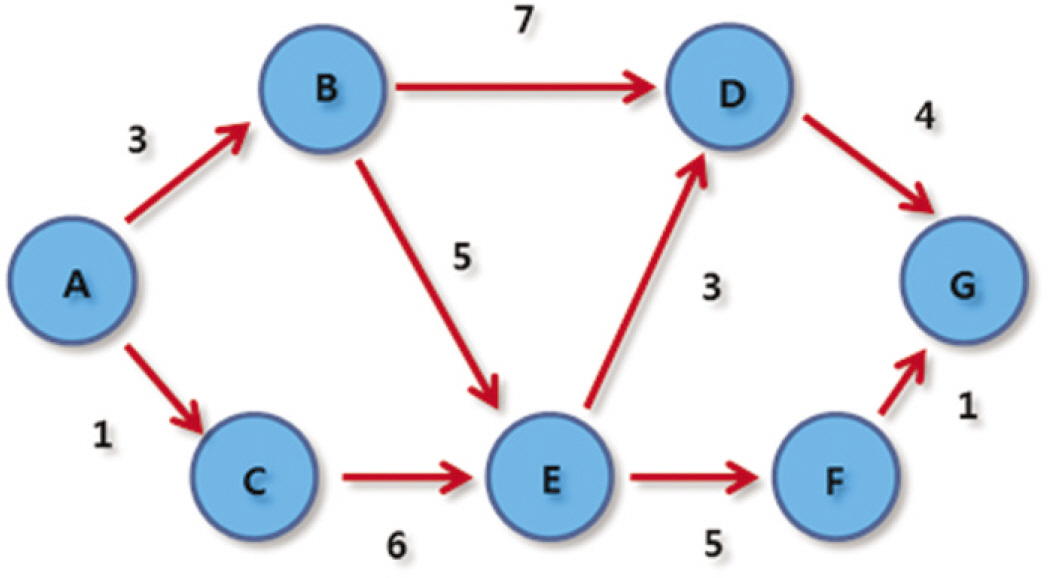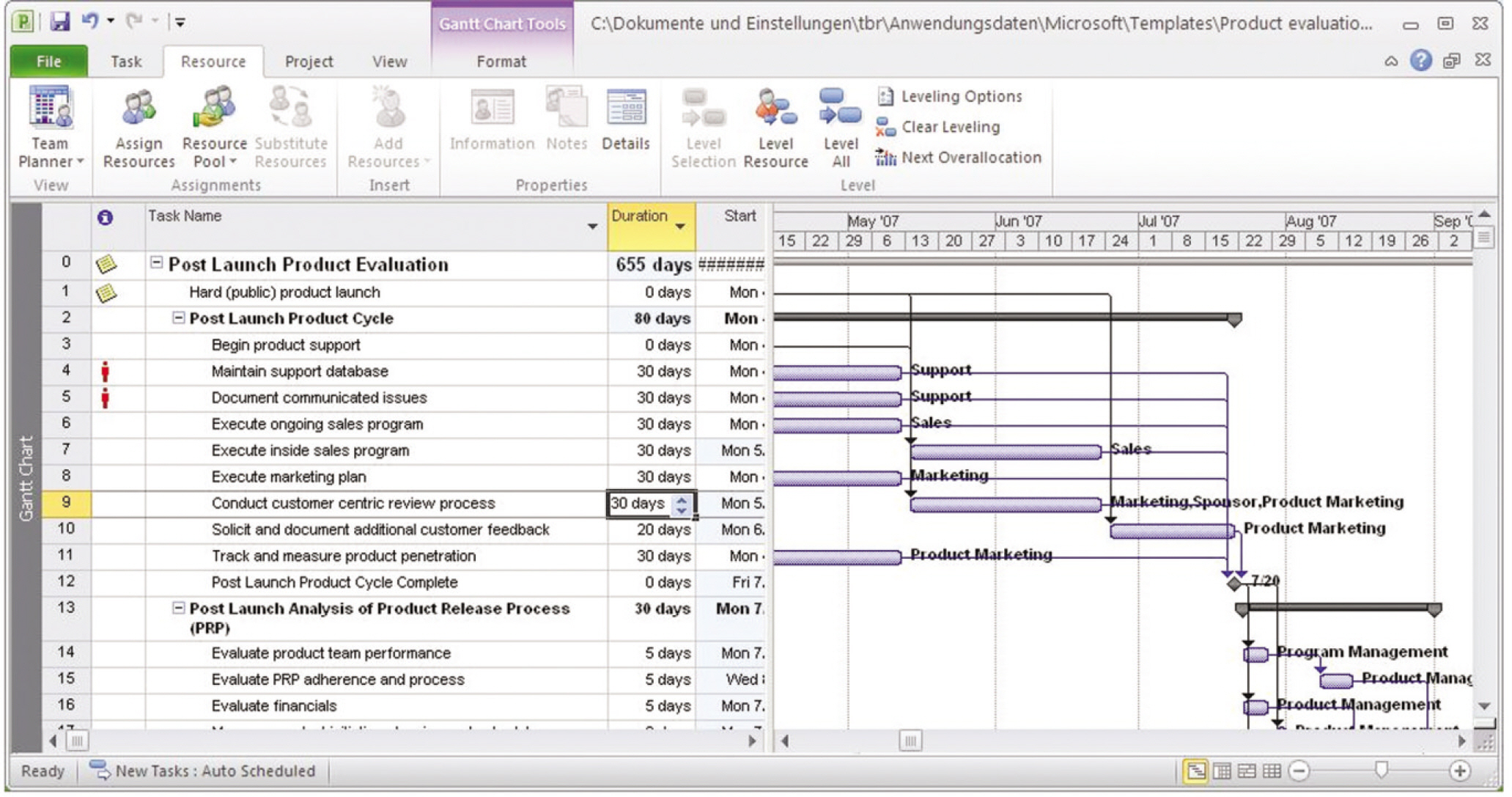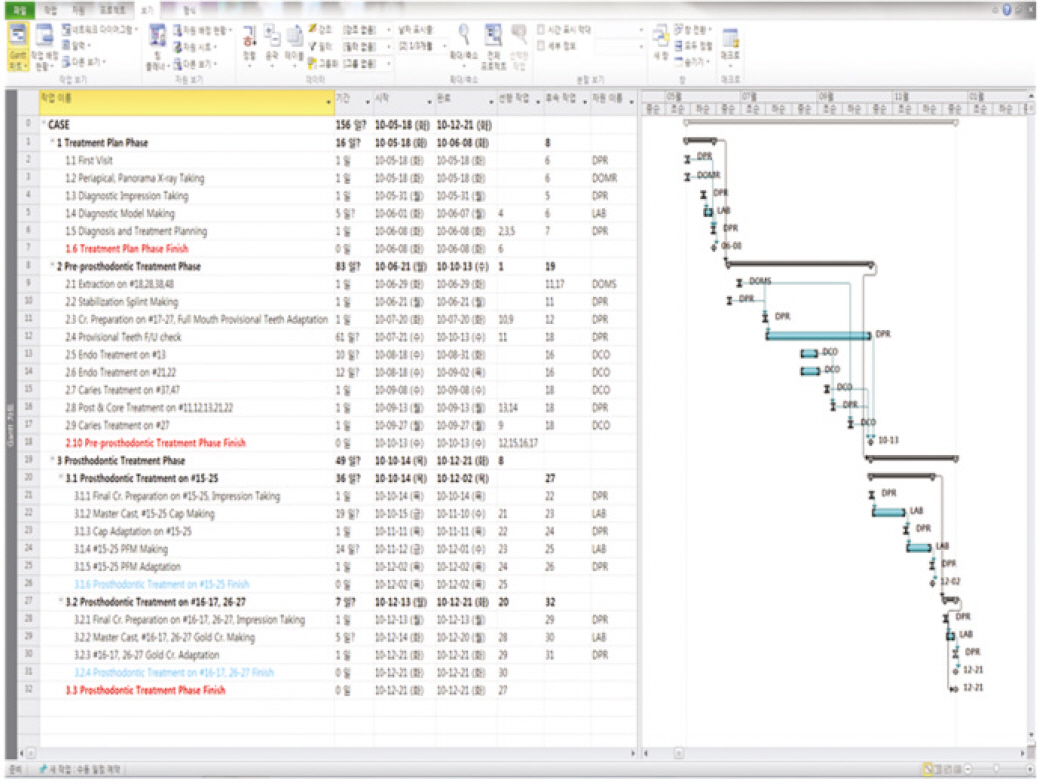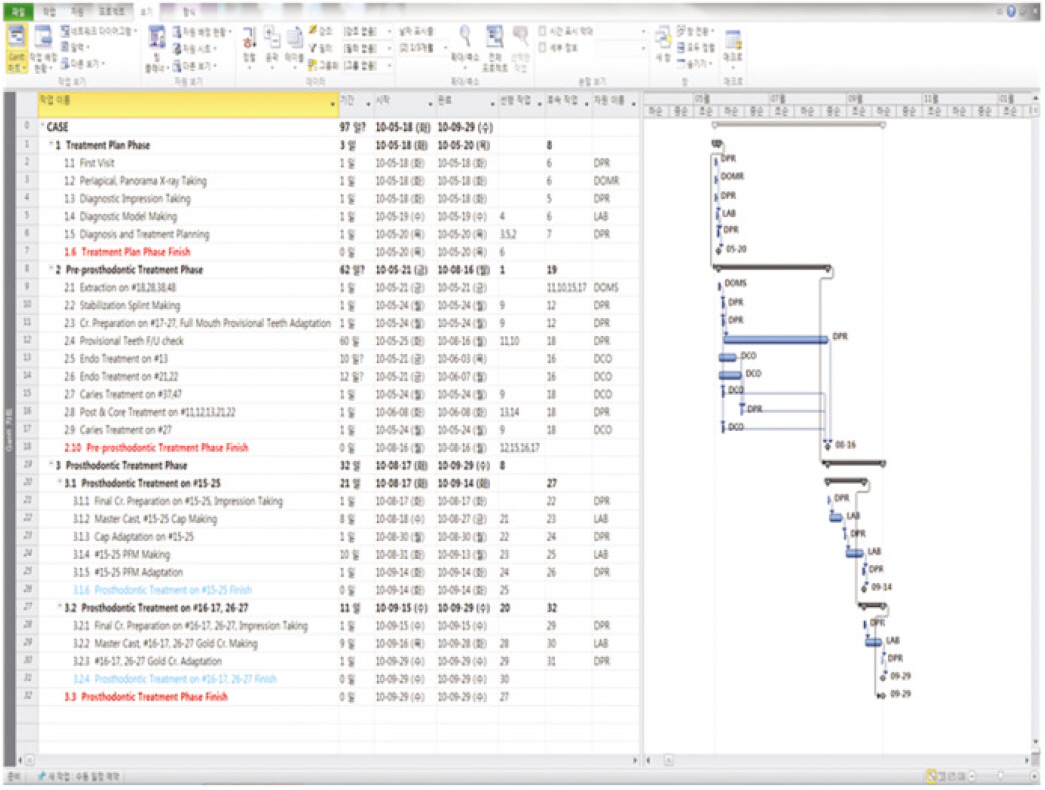J Korean Acad Prosthodont.
2014 Jul;52(3):186-194. 10.4047/jkap.2014.52.3.186.
Application of PERT/CPM in dental practice
- Affiliations
-
- 1Department of Prosthodontics, School of Dentistry, Wonkwang University, Jeonbuk, Republic of Korea. dong@wonkwang.ac.kr
- KMID: 2195423
- DOI: http://doi.org/10.4047/jkap.2014.52.3.186
Abstract
- PURPOSE
Process management is the activity which manages all procedure of construction by representing visually interrelation of operation or sequence setting. The purpose of this study was for reducing treatment period and higher efficiency of treatment through application of PERT/CPM (Program Evaluation & Review Technique/Critical Path Method) in dental clinic.
MATERIALS AND METHODS
The patients were selected for study who needed more than 2 departments' cooperation for prosthodontic treatment in Wonkwang Dental University Hospital. Control group is composed of the patient's whole treatment plan, treatment period, numbers of hospital visit, treatment costs, treatment results. On the other hand, experiment group contains the patient's virtual treatment data based on PERT/CPM technique. We applied PERT/CPM in operation analysis.
RESULTS
Treatment period, numbers of hospital visit was decreased as 18.1% and 15.3% when we applied operation analysis based on charts. Also treatment cost in experiment group was 0.9% economized compared with control group's treatment cost.
CONCLUSION
Application of PERT/CPM in dental clinic can achieve reliable treatment and reduced treatment period and establish plan of minimum treatment cost.
Keyword
Figure
Reference
-
1. Johnston JF, Dykema RW, Goodacre CJ, Phillips RW, Johnston JF. Johnston's Modern practice in fixed prosthodontics. 4th ed.Philadelphia; PA: Saunders;1986.2. Vanhoucke M. Project Management with Dynamic Scheduling: Baseline Scheduling, Risk Analysis and Project Control. 2 nd ed. Dordrecht;. Springer;2013. p. 45–50.3. Vanhoucke M, Demeulemeester E. The application of project sched-uling techniques in a real-life environment. Proj Manage J. 2003; 34:30–42.
Article4. Vanhoucke M. On the dynamic use of project performance and schedule risk information during projecttracking. Omega. 2011; 39:416–26.
Article5. Kelley JE Jr. Critical-Path Planning and Scheduling: Mathematical Basis. Oper Res. 1961; 9:296–320.
Article6. Zarb GA, Bolender CL, Eckert SE. Prosthodontic treatment for edentulous patients: Complete dentures and implant-supported prostheses. 12th ed.St. Louis: Mosby;2004.7. Kruger GO. Textbook of oral and maxillofacial surgery. 6th ed.C.V. Mosby;1980.8. Albrektsson T, Bra�nemark PI, Hansson HA, Lindstro¨m J. Osseointegrated titanium implants. Requirements for ensuring a long-lasting, direct bone-to-implant anchorage in man. Acta Orthop Scand. 1981; 52:155–70.9. Bryant SR, Zarb GA. Osseointegration of oral implants in old-er and younger adults. Int J Oral Maxillofac Implants. 1998; 13:492–9.10. Lytle JD. Clinician's index of occlusal disease: definition, recognition, and management. Int J Periodontics Restorative Dent. 1990; 10:102–23.
- Full Text Links
- Actions
-
Cited
- CITED
-
- Close
- Share
- Similar articles
-
- Study on Tuberactinomycin-N (TUM-N) (Part 2) -Crossresistance of Tubercle Bacilli to TUM-N, VM, CPM, KM, and SM-
- Central Pontine and Extrapontine Myelinolysis without Hyponatremia after Alcohol Withdrawal: One Case Report
- Crossresistance between Tuberactinomycin-N, Capreomycin and Kanamycin of Mycobacterium tuberculosis isolated from patients with pulmonary tuberculosis
- Motivational Interviewing Training Using Role Play in Dental Hygiene Students
- A Case of Central Pontine Myelinolysis Unrelated Serum Sodium Level in Traumatic Brain Injury Patient








